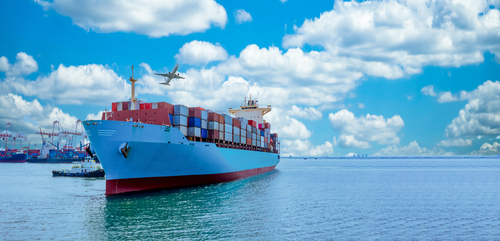The shipping industry is continuing to face criticisms of measures to reduce the industry’s staggering carbon footprint. International shipping accounts for 3% of annual global emissions – around one billion tons of emissions are produced by ships every year. Without further action, ship emissions are expected to grow to 90 to 130% of 2008’s emission levels by 2050.
In October of this year, leading maritime nations, including China, Japan, South Korea, Norway and several EU member states, agreed on a proposal for energy efficiency measures for existing ships that are intended to reduce shipping emissions.
The agreed upon package, modelled on Japan’s Energy Efficiency Existing Ship Index (EEXI) would reduce engine power and introduce ship-level carbon intensity targets, among other measures.
However, the proposal’s measures would not be enforced until 2030, which is a decade behind climate goals set by both the International Maritime Organization (IMO) and Paris Agreement climate goals. The IMO’s target – announced in 2018 – is to cut CO2 emissions from international shipping by at least 50% of 2008 levels by 2050, as well as reduce carbon intensity by 40% by 2030. However, even the IMO’s target falls short of the Paris Agreement’s goals to limit global warming to 1.5C – which would require full decarbonization by 2050.
Bryan Comer, a senior researcher at the International Council on Clean Transportation, said of the measures: “What’s on the table now may not even be enough to achieve the IMO’s minimum 2030 target. It’s certainly not Paris-aligned. Every year that we allow shipping emissions to go up, it is eating up more of the carbon budget. More drastic actions will need to be taken later.”
According to a report by the ICCT, EEXI compliance would only reduce CO2 emissions from the existing fleet by just 0.8 to 1.6% by 2030. While the countries propose a combination of EEXI with other operational measures such as a Carbon Intensity Indicator (CII), experts say it is not enough to address the true scale of the industry’s carbon footprint.
New IMO measures have also been criticized by industry players who claim that these measures are likely to slow down the demolition of older, less-efficient ships until they enter into force. According to the proposal’s requirements, all cargo and cruise ships above 5,000 GT will be given an annual rating of A to E, with increasingly stringent rating thresholds towards 2030. For ships that receive an E rating in a single year or a D rating for three consecutive years, an approved corrective action plan needs to be developed as part of the ship energy efficiency management plan (SEEMP).
On or before January 1, 2023, all ships above 400 GT need to have an approved SEEMP on board, and the implementation of the SEEMP will be subject to audits. For ships above 5,000 GT, the SEEMP also needs to include an implementation plan on how to achieve the CII targets.
According to shipbroking firm SSY, instead of speeding up the removal of aging ships from the market and replacing them with more eco-friendly newbuilds, the shipowners are expected to continue to slow steam as a way of meeting environmental targets.
Said Torbjorn Rydbergh, Managing Director of Marine Benchmark, “The combination of low newbuilding deliveries, a potential rebound in demand and an ageing fleet implies that CO2 emissions are more likely to track fleet growth this decade, which suggests that the shipping industry cannot deliver an absolute reduction in CO2 emissions by 2030.”
Although the European Sea Ports Organisation (ESPO) supports the Initial IMO GHG Strategy, the organization said that coming discussions on mid- and long-term measures must work toward more ambitious policies.
“If a sufficiently ambitious approach fails to materialize on the international level by 2023, ESPO favors a regional measure that ensures real and significant emission reductions and delivers on the European Green Deal, whilst accounting for potential market distortions on the regional level,” the organization said.


